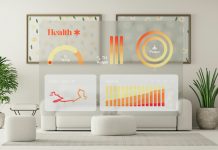
In a new study, scientists have discovered a way to simplify how electronic devices use electrons.
They found a material that can serve dual roles in electronics.
The study was conducted by a research team at The Ohio State University.
Currently, each part of the electronic device could only act as electron-holder or a hole-holder, not both.
That meant that electronics needed multiple layers to perform.
In the current study, the researchers found a material called NaSn2As2.
It is a crystal that can be both electron-holder and hole-holder. It potentially eliminates the need for multiple layers.
In this new crystal, the carriers behave like electrons when traveling within each layer, and holes when traveling through the layers.
The researchers made the discovery almost by accident.
One team member was measuring the properties of the crystal when he noticed that the material sometimes behaved like an electron-holder and sometimes like a hole-holder.
He thought perhaps he had made an error and then ran the experiment again and again. But every time he got the same result.
The team called this dual-ability phenomenon “goniopolarity.”
They believe the material functions this way because of its unique electronic structure. It is possible that other layered materials could exhibit this property.
The researchers suggest that the finding could help create more efficient systems that operate more quickly and break down less often.
It could help engineers develop different kinds of electronic devices.
The new devices are the building blocks of electricity. Each electron has a negative charge and can radiate or absorb energy depending on how it is manipulated.
This will include solar cells, transistors in laptops, light sensors in smartphone cameras and many other things
One study author is Joseph Heremans, professor of mechanical and aerospace engineering and Ohio Eminent Scholar in Nanotechnology at Ohio State University.
The study is published in the journal Nature Materials.
Copyright © 2019 Knowridge Science Report. All rights reserved.



